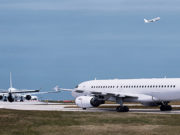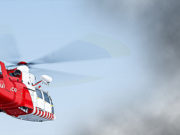The fatal accident rate for U.S. passenger and cargo airlines has declined significantly since 2001, down to 0.006 accidents per 100,000 flight hours ─ or the equivalent of one fatal accident for every 16.3 million flight hours, the U.S. National Transportation Safety Board (NTSB) says.
In comparison, the NTSB said Monday, in updating its 2001 report, Survivability of Accidents Involving Part 121 U.S. Air Carrier Operations, 1983 Through 2000, that the fatal accident rate for air carriers operated under U.S. Federal Aviation Regulations Part 121 from 1983 to 2000 was 0.030 per 100,000 flights.
The number of fatal accidents declined from 71 (or 12.5 percent of total accidents) in 1983−2000 to 23 (or 4.1 percent of total accidents) in 2001−2017, the report said. The total accident rate for air carrier aircraft from 2001 through 2017 was 0.181 accidents per 100,000 flight hours, compared with 0.251 accidents per 100,000 flight hours in 1983−2000. Data showed there were 564 total accidents in the 17 years from 2001 through 2017, compared with 569 in the 18 years from 1983 through 2000.
The updated report also compared the number and rate of serious injury accidents, noting that the serious injury accident rate was 0.088 per 100,000 flight hours in 2001−2017, compared with 0.117 per 100,000 flight hours in 1983−2000. Serious injury accidents accounted for 272 (48.2 percent) of all accidents in 2001−2017, compared with 263 (46.2 percent) of all accidents in 1983−2000.
The NTSB said that in the combined 35 years included in the two periods, in 94 percent of the total accidents, all occupants survived.
“Many of these cases involved turbulence events resulting in serious injuries to one or more occupants but no fatalities,” the report said. “Other accidents, such as bird strikes or on-ground collisions between taxiing aircraft, may result in substantial damage to aircraft but rarely involve injuries or fatalities among aircraft occupants.”
The NTSB analyzed a subset of 35 accidents that involved a pre-crash or post-crash fire, at least one fatality or serious injury and an aircraft that was either destroyed or substantially damaged and found that in 10 of the crashes, all occupants survived. In six crashes, between 81 and 99 percent of occupants survived; and in three crashes, between 61 and 80 percent survived. At the other end of the spectrum, in nine crashes, all occupants were killed, and in five crashes, between 1 and 20 percent survived. In one crash, between 21 and 40 percent survived, and in one crash, between 41 and 60 percent survived.
Of the 3,823 occupants in those 35 airplanes, 52.7 percent had either no injuries or minor injuries, and 6.3 percent received serious injuries, the report said. Some 27 percent were killed by the impact, and 4.1 percent were killed by fire or smoke; for 9.1 percent, the fatality was attributed to an unknown cause, and for 0.7 percent, the cause was listed as “other.”


